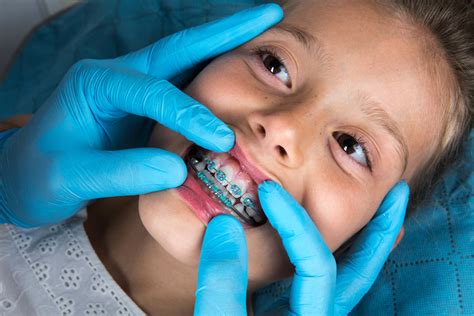Braces and Your Child: Age-Appropriate Orthodontics
Considering braces for your child? It's a big decision, filled with questions about timing, cost, and the overall impact on your child's development. This guide will help you navigate the complexities of age-appropriate orthodontics, empowering you to make informed choices for your child's oral health and confidence.
When Should My Child See an Orthodontist?
The American Association of Orthodontists recommends that children have their first orthodontic evaluation by age 7. This early assessment allows orthodontists to identify potential problems early on, even before they become fully visible. While some children may not need braces until their teenage years, early intervention can often prevent more extensive or complex treatment later. This proactive approach is crucial for addressing issues like:
- Severe crowding or spacing: Early detection can allow for intervention with expanders or other appliances, guiding teeth into better alignment.
- Underbites or overbites: These malocclusions can impact chewing, speech, and even self-esteem. Early treatment can guide jaw growth and reduce the severity of these conditions.
- Crossbites: Where the upper teeth bite inside the lower teeth, this can lead to uneven jaw growth and facial asymmetry. Early intervention can correct this issue effectively.
What Happens During an Early Orthodontic Evaluation?
The initial visit is a comprehensive examination of your child's teeth, jaws, and bite. The orthodontist will assess:
- Jaw growth: Evaluating how the jaws are developing and if there are any discrepancies in their growth patterns.
- Tooth eruption: Monitoring the timing and order of teeth coming in, looking for any irregularities.
- Bite alignment: Analyzing the relationship between the upper and lower teeth to identify any malocclusions.
This examination isn't always about immediately recommending braces. Often, the orthodontist will monitor your child's development and suggest interventions only if necessary. Many children benefit from early intervention with appliances like palatal expanders to create more space for their permanent teeth.
My Child Needs Braces: What are the Different Types?
Several types of braces cater to different age groups and needs. While traditional metal braces remain a common and effective option, other choices include:
- Metal braces: The most traditional and often the most affordable option. They are durable and effective for correcting a wide range of orthodontic issues.
- Ceramic braces: These braces are tooth-colored, making them less noticeable than metal braces. They are a popular option for older children and teenagers concerned about aesthetics.
- Lingual braces: These are placed on the inside surface of the teeth, making them completely invisible from the outside. However, they can be more challenging to clean and adjust.
- Invisalign: Clear aligners offer a more discreet alternative to traditional braces. They are removable and require excellent patient compliance. They may not be suitable for all cases.
The choice of braces will depend on several factors, including your child's age, the severity of the orthodontic problem, and personal preferences. Your orthodontist will discuss the best option for your child's specific situation.
How Much Do Braces Cost and Are There Financing Options?
The cost of braces varies significantly depending on the type of braces, the complexity of the treatment, and your geographic location. It’s essential to discuss payment plans and financing options with your orthodontist. Many orthodontic practices offer payment plans, and some accept insurance coverage. Exploring these options early in the process ensures you can manage the financial aspect of treatment effectively.
How Long Does Orthodontic Treatment Take?
Treatment duration varies depending on the complexity of the case and the type of braces used. Treatment can range from a few months to several years. Consistent compliance with the orthodontist's instructions, including regular visits and diligent oral hygiene, is crucial to achieve successful and timely results.
What About My Child's Oral Hygiene While Wearing Braces?
Maintaining excellent oral hygiene is paramount while wearing braces. Food particles can easily get trapped around the brackets and wires, increasing the risk of cavities and gum disease. Thorough brushing and flossing are essential, and your orthodontist will likely provide specific instructions on how to clean effectively around the braces. Regular dental checkups are also necessary during treatment.
By understanding the basics of age-appropriate orthodontics, you can proactively address your child's orthodontic needs, promoting healthy teeth and a confident smile for years to come. Remember, early consultation is key, allowing for early intervention and potentially avoiding more complex and lengthy treatments later. Consult with a qualified orthodontist to determine the best course of action for your child.

